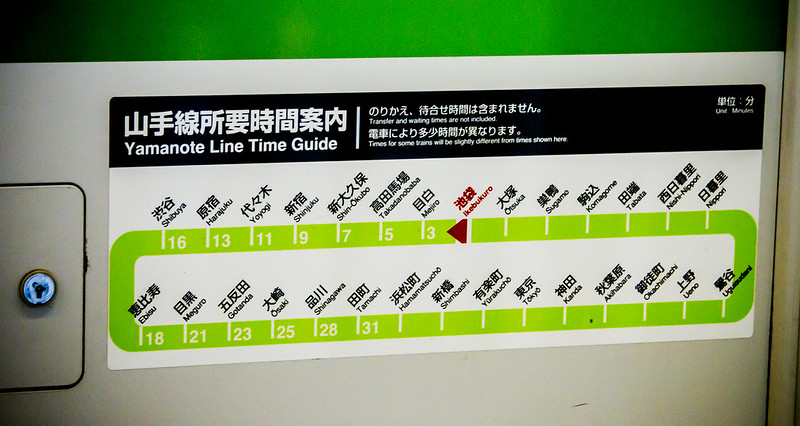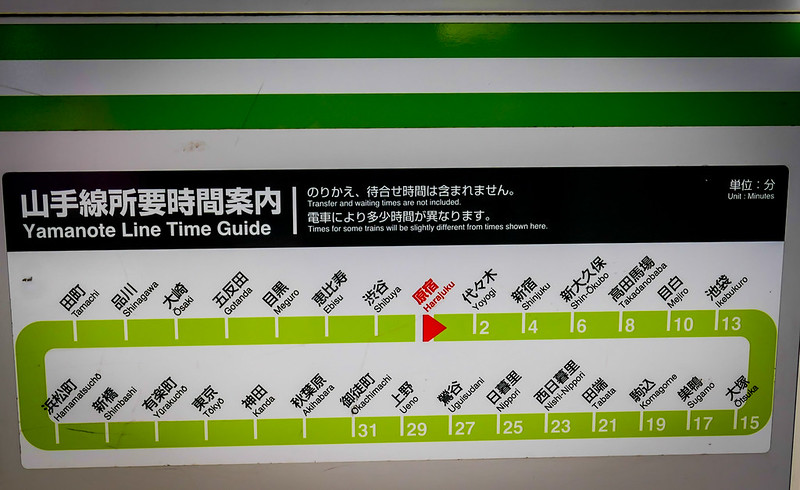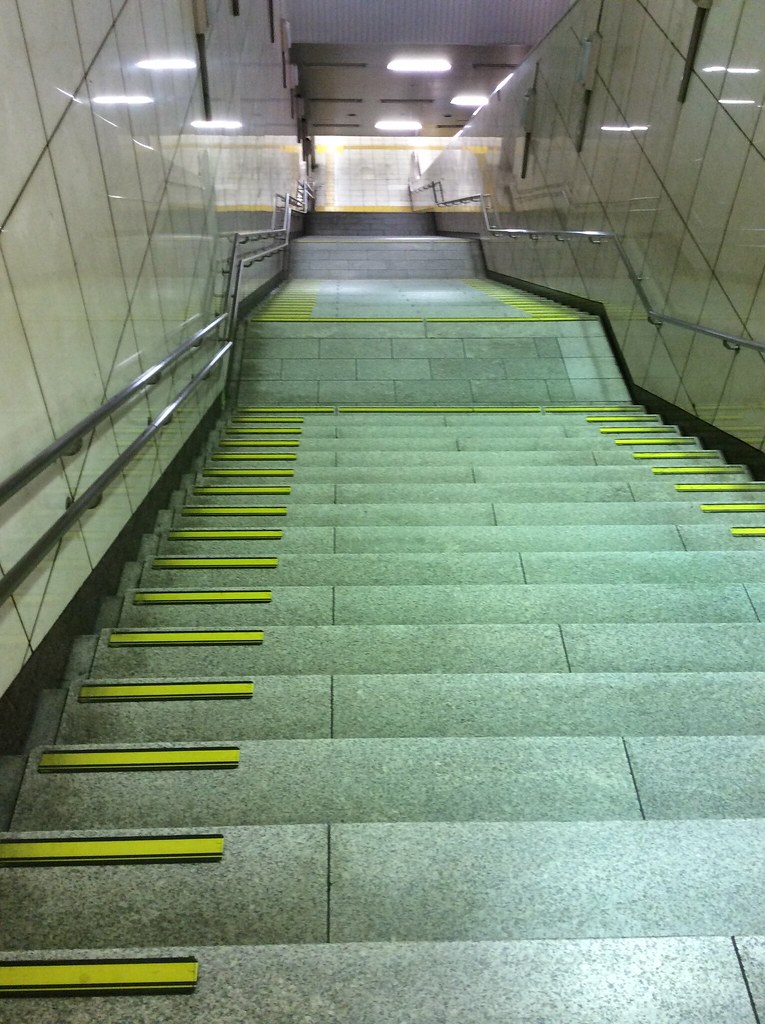
For those going to Tokyo, if there is one thing you will often ride on, it’s the JR Yamanote Line.
It’s one of Tokyo’s most busiest lines and it’s the line that will connect you to important stations such as Shibuya, Shinjuku, Ikebukuro, Ueno and Tokyo Station.
But for those who are going to Tokyo, it may be a little confusing, so I’ll make a simple and easy to understand guide.
First, here’s a video I shot of riding on the JR Yamanote Line which was shown on Facebook Live.
I. CONVENIENCE
What makes Yamanote Line so convenient is that it’s like a circle around Tokyo where the major stations are located and it’s the station where it’s light green and easy to find. So, whether you take the right or wrong direction, you will eventually make it to your destination because the JR Yamanote Line goes in a circle. And if you miss a train or if it was too crowded, there are many other trains on the Yamanote Line that will come several minutes after.
And for those going to Japan for the first time, one thing you will notice while riding on the JR YAMANOTE LINE is that each stop will have a different jingle.
2. LOOK AT THE GREEN JR YAMANOTE LINE SIGNS OF THE DESTINATION YOU ARE GOING TO CAREFULLY!
When you are at a major station, quite often you will see various signs for the JR Yamanote Line. Don’t panic!!! Just know that there are multiple trains because of rush hour, but know that Yamanote Trains go in different directions. 5-6 may go one way and 7-8 will go the other.
When it’s not rush hour, one of these lanes will close. Just go with the flow and see where most people are lining up. If no one is standing near the platform on one side and you don’t see one on the other, it’s safe to assume no train will be coming on that side.
The major stations on JR Yamanote Line are Ikebukuro, Shibuya, Shinjuku, Ueno and Tokyo.
LESSON 1: Let’s assume you are at Ikebukuro Station. As you can see the above sign, #7-#8 it will take me to Tabata, Ueno and Tokyo. While #5 and #6 will take me to Shinjuku, Shibuya and Shinagawa. Now you will look at these many signs located near each JR Yamanote area:

#5 and #6 will take me to Shinjuku, Shibuya and Shinagawa. #7-#8 it will take me to Tabata, Ueno and Tokyo.
QUESTION 1: You want to go from Ikebukuro Station to Ebisu? Which one should you take #5/#6 or #7/#8?
ANSWER: Because Ebisu is right after Shibuya, you will want to take #5/#6.
QUESTION 2: I want to go to catch the Shinkansen at Tokyo Station, which one should I take?
ANSWER: #7/#8
It’s actually quite easy, but it’s important to refer to these guides or maps at a station.
3. KNOW THE TIME (REFER TO THE YAMANOTE LINE TIME GUIDES)

One thing that people new to Tokyo do quite often is they take the JR Yamanote Line knowing it’s goes in a full circle and that you’ll eventually arrive at your destination. But it is important to keep your eye out on these signs to see which direction you want to go.
This is fine and dandy but not when you need to get somewhere at a certain time, especially if you are riding a shinkansen.
In Japan, these guides that I pointed out have times. They go from 2-3 minute intervals for each stop.

So, let’s say I am staying at a place near HARAJUKU STATION. You take off and now you need to get to UENO STATION.
QUESTION: How long will it take me to get from Harajuku Station to Ueno Station?
ANSWER: It will take 29 minutes to get to UENO STATION.
QUESTION: I accidentally took Harajuku Station but I really need to get to Shinjuku Station? How long will it take?
ANSWER: As you can see, it would take four minutes.
4. DON’T RIDE DURING PEAK HOURS, UNLESS YOU DON’T MIND BEING SMASHED TOGETHER

Simply know this… 7-9 a.m. is the most busiest time in Japan. 5-7 p.m. is crowded but not as bad as 7-9 a.m., as people head to places to eat or the bar or to meet up with friends. The other busy time is the 10-11:30 p.m., as everyone tries to go home late after staying out and catch the last train home.

Whenever I want to get to my destination, I leave at 7:00 a.m. or leave at 9:00 a.m. Anything in between, I know I’m going to be a sardine, smashed up on someone.
This is where planning to ride other lines, especially the metro lines comes in place. You can read my travel guide about how to read a Subway/Metro route.
Last but not least, most people don’t like to take the first or last car on a train. So, if you plan to ride during a rush hour, consider using the first or last car on the JR Yamanote Line. Especially if you are carrying luggage with you.
5. IF YOU ARE PLANNING TO STAY IN TOKYO, PLAN ON FINDING A HOTEL OR PLACE NEAR THE JR YAMANOTE LINE
Having a place to stay near the JR Yamanote Line is convenient. You can take escalators/elevators and it’s so convenient!
Getting from one place to another in Tokyo is great but sometimes, people who do AirBNB find out that while they got a VERY cheap place in Tokyo, they are far from a train station. Imagine having to walk a mile or two just to get to the station back and forth?
The other. is that they are staying near a Metro Station. While I have stayed near the Metro Station before, I don’t like it. Why?
Because of this:

Because you are going below the station, imagine going through several flights of stairs this high with your heavy luggage? And you find out that it’s not just one long flights of stairs, you have to go through several pathways of long stairs with your heavy luggage. And the worst of it, no elevator or escalator nearby.
Make life easy for yourself… Stay in a place near the JR Yamanote Line! It’s so convenient!
